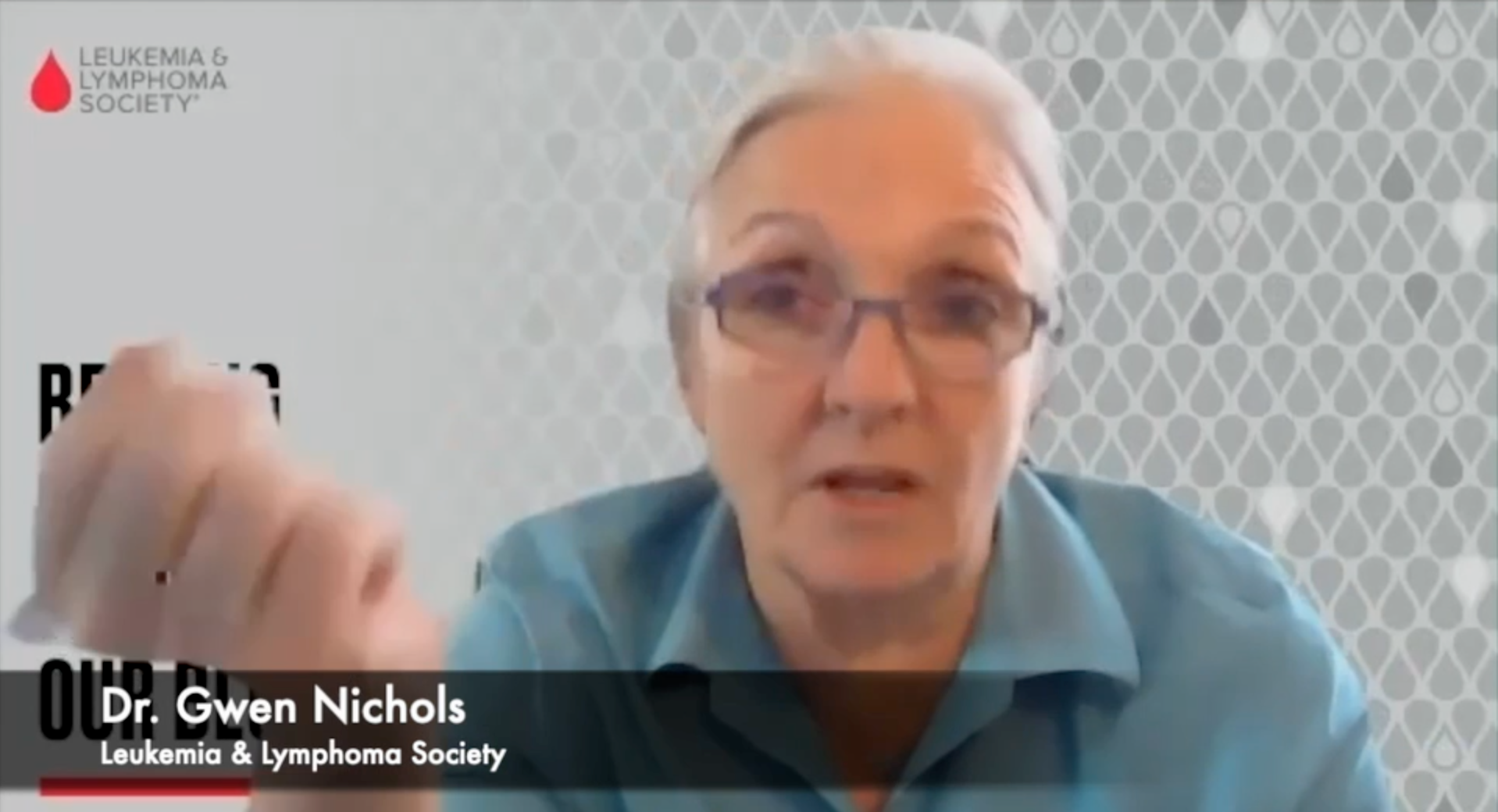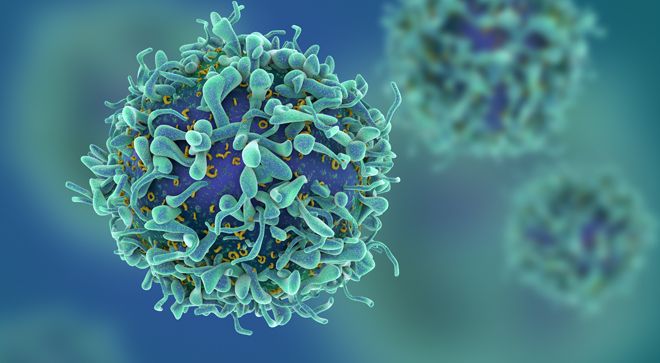News
Article
Blood Cancer Research Poised for Another ‘Banner Year’ in 2024
By Lee Greenberger, Ph.D., LLS Chief Scientific Officer
More than 25,000 medical professionals from across the world came together in December to discuss the latest blood cancer developments during the annual meeting of the American Society of Hematology (ASH). This annual event gives us the opportunity to think about what advances are on the horizon as LLS works to strengthen cures, care and quality of life for people with blood cancer and their families.
Study results presented at ASH 2023, including many by LLS-funded investigators and Therapy Acceleration Program partners, showcased an incredible range of treatments that are either currently available or in development for every type of blood cancer. What I heard at ASH, not to mention the recent addition of $65 million in new LLS research investments, set us up for another banner research year in 2024.
Immunotherapy, targeted therapies remain a cornerstone of blood cancer care
New data demonstrated that immunotherapy continues to provide substantial and increasing benefits, particularly in the treatment of lymphomas and multiple myeloma.
Current CAR T-cell treatments target CD19 or BCMA proteins, which are common on lymphoma and myeloma cancer cells, respectively. New CAR targets in development include BAFF-R for mantle cell lymphoma, CD5 and CD7 for T-cell lymphoma, and ddBCMA, which uses a different mechanism to target BCMA on myeloma cells.
Expect to hear more about each of these new targets in 2024 as well as new insights into why CAR-T stops working—or doesn’t work at all—in some patients. Understanding these mechanisms is step one in finding ways to overcome them and help more patients.
CAR-T is both an immunotherapy and a targeted treatment that works by helping T cells find and attach to BCMA, CD19 and hopefully soon several other unique targets on cancer cells. But CAR-T is just one type of targeted therapy—most of the treatment data presented at ASH and the work we’re looking forward to hearing about in 2024 has a genetic target.
Here are just two examples. BTK inhibitors continue to lead the way in the treatment of B-cell cancers, including non-Hodgkin lymphomas and CLL. These targeted drugs cut off the BTK protein defective B cells need to proliferate. Perhaps even more exciting is emerging data about menin inhibitors, work that LLS started supporting nearly 15 years ago in a lab at the University of Michigan.
We heard some strong results during ASH for menin inhibitors in patients with AML that includes genetic mutations that make outcomes for this already hard to treat disease even worse. Menin inhibitor treatment increased overall survival in patients who have exhausted many other treatment options. I expect at least one, and possibly two menin inhibitors to be approved by the FDA in the next few years.
Emerging themes to watch in 2024
We are in a period of building on transformational treatments. After a series of breakthroughs in recent years, including new precision medicines and immunotherapies, researchers are working hard to refine and expand their use so more patients can benefit.
Breakthroughs appear to the public to be sudden, dramatic discoveries. But in medical research, that’s never quite true. Breakthrough takes years of research, and we owe it to patients to ensure we spend just as much time exploring every avenue after the breakthrough to make sure these new drugs are used optimally.
Thanks to targeted therapies for so many types of cancer at all stages, more patients can avoid harsh chemotherapies. When chemotherapy is necessary, doctors can use updated versions of chemo drugs, combine and deliver them in new ways, and they have better ways to reduce the serious side effects of chemo that can limit or even prevent treatment in some people, especially older patients.
New diagnostic and prognostics tools are emerging to guide treatment. For example, simple blood tests are emerging that can predict the best time to stop treatments and when or even if they will need to be started again to keep cancer in check. These so called “peripheral biomarkers” are a big advance. Without them, doctors have to rely on scanning techniques or biopsies, which are not always feasible.
Progress on all these fronts will continue in 2024 with a wide range of research ongoing in each area.
We are making meaningful progress in all types of blood cancer
This is just a sample of what’s coming for half a dozen types of blood cancer.
Myeloma: Adding the anti CD38 antibody daratumumab to the standard treatment regimen in patients with newly diagnosed multiple myeloma led to significantly higher survival rates without disease progression (84.3%) compared to standard care alone (67.7%) Next up: does this combination improve overall survival? And a big question for this and all combo treatments: will they be affordable and equally available to all patients? LLS Equity in Access Research Grants are helping to find ways to make sure all treatments are.
Mantle cell lymphoma: Combining the BTK inhibitor ibrutinib with the B-cell lymphoma-2 inhibitor venetoclax for relapsed or refractory mantle cell lymphoma improved progression-free survival to 33 months compared to 22 months for ibrutinib alone. Stay tuned as researchers continue to explore this combination and evaluate whether these results can be replicated with BTK inhibitors that have fewer negative effects on the heart than ibrutinib, such as zanubrutinib, acalabrutinib, and pirtobrutinib, which could also offer additional advantages because it works differently than the other BTK inhibitors.
Chronic lymphocytic leukemia (CLL): After decades of using a triple combination chemotherapy, the standard of care for CLL has shifted to targeted treatment with ibrutinib and venetoclax. Data at ASH showed that people receiving the targeted combination had 8-fold less deaths than the older chemo regimen. Next up: What do we do when a patient’s disease becomes resistant to the ibrutinib/venetoclax combination? Will a minimal residual disease blood test, which can detect measurable cancer cells during and after treatment, give physicians the information they need to know the right time to stop treatment, and to restart it if necessary?
Acute myeloid leukemia: LLS dedicates about one-quarter of its research budget to AML, which is one of the most common and most deadly blood cancers. Perhaps the most exciting news coming out of ASH was about a new type of drug called menin inhibitors for people with AML. Patients with an AML mutation called KMT2A fusion, who have among the worst AML outcomes, had improved overall survival and complete hematological response after menin inhibitor treatment. This is one of the two menin inhibitor drugs likely to be evaluated for approval soon by the FDA.
Myelofibrosis: After years of having nothing but supportive care to offer people with myelofibrosis, there are several late-stage drug trials in progress. One trial reported at ASH showed that combining the kinase inhibitor ruxolitinib with a BET inhibitor called pelabresib significantly improved debilitating symptoms in people with myelofibrosis: anemia and an enlarged spleen. Look for a possible FDA drug approval for pelabresib in 2024.
CMML: Rare cancers like CMML are difficult to study. There are fewer patients available for clinical trials, median survival time is just 30 months, and up to 3 in 10 patients will convert to having AML. There is a major effort underway, led by LLS and supported by the Segal Family Foundation, to test new treatments and dig deeper into understanding mechanistically how CMML forms and attacks the body. We expect an acceleration in our understanding of CMML in 2024 and beyond.
I hope after reading this, you are as excited as I am about the progress that we are making across blood cancer.










2 Commerce Drive
Cranbury, NJ 08512
All rights reserved.






